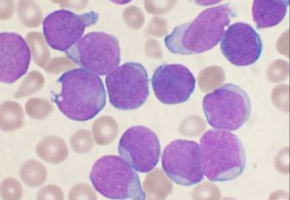
Recent studies on a small number of patients with leukaemia treated with bone marrow transplantation have suggested that the presence of the common cytomegalovirus (CMV) in patients or their donors may protect against relapse or even death after the transplant.
A large international study published in the journal Blood, based on data from some 9,500 transplant patients in over 400 hospitals between 2003 and 2010 now shows the opposite.
“The original purpose of the study was to confirm that CMV infection may prevent leukaemia relapse, prevent death, and become a major therapeutic tool for improving patient survival rates," said Dr. Pierre Teira, haematologist-oncologist and researcher at the mother-child research hospital CHU Sainte-Justine, assistant clinical professor at the University of Montreal's Faculty of Medicine, and first author of the study.
“However, we found the exact opposite. Our results clearly show that, despite significant progress made in the last 20 years in the fight against death directly related to CMV, the virus not only does not prevent leukaemia relapse, but also remains a major factor associated with the risk of death. Monitoring of CMV after transplantation remains a priority for patients.”
CMV is a common virus in the general population, with more than 90% of adults as carriers.
In healthy people, CMV infection usually goes unnoticed, although the virus remains with them in latency throughout their lives.
However, in leukaemia patients receiving bone marrow transplants, CMV infection increases the risk of death.
Yet, reactivation of CMV after a transplant is quickly detected and easily treated by current antiviral drugs.
“Deaths due to uncontrolled CMV reactivation are virtually zero in this study, so uncontrolled CMV reactivation is not what reduces survival rates after transplantation. The link between this common virus and increased risk of death remains a biological mystery,” said Dr. Teira.
One possible explanation is that CMV decreases the ability of the transplant patient’s immune system to fight against other types of infection.
This is supported by the fact that death rates from infections other than CMV are higher in patients infected with CMV, or whose donors were.
For researchers, the next step is to verify whether the latest generation of anti-CMV treatments can prevent both reactivation of the virus and weakening of the patient's immune system against other types of infection in the presence of CMV infection.
“CMV has a complex impact on the outcomes for transplant patients, and each year more than 30,000 patients around the world receive bone marrow transplants from donors. It is therefore essential for future research to better understand the role played by CMV after bone marrow transplantation and improve the chances of success of the transplant. This will help to better choose the right donor for the right patient," concluded Dr. Teira.
Source: Blood